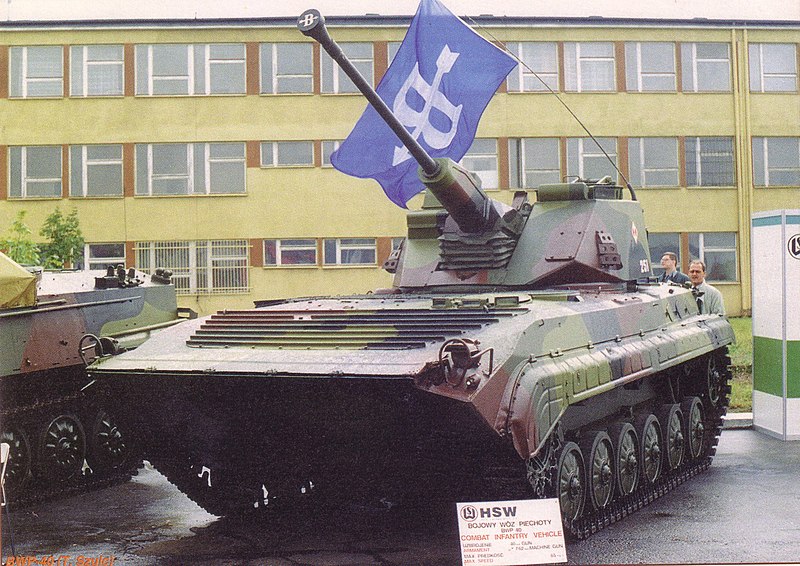I think, why not some history lesson from my country, and to be more precise, from the 1990's and early XXI century.
The first part might be very interesting for Indian users of this forum, as they also start to see obscolence of the BMP series of vehicles.
@Kunal Biswas I am very interested about your thoughts about our modernization proposals.
In Poland in the 1990's there were several attempts to modernize these vehicles, althoug none were implemented as not reasonable from economic point of view and the obvious fact that replacement either way will be nececary.
BWP-40 (or BMP-40 if you wish), modernization was purely focused on improving firepower by installing CV9040 turret armed with Bofors 40mm L70. However such configuration was too heavy and too big, also amount of ammunition taken for the gun was low. Dismounts quantity was reduced and vehicle if I am not mistaken, could not swim anymore.
BMP-95, modernization was focused on improving survivability and firepower.
The old turret was replaced with a new one, armed with 23mm auto cannon, a 7,62mm machine gun and SPG-9. These modules we can see on hull and turret, are explosive reactive armor with ceramic backing CERAWA-1 providing protection against 14,5mm armor piercing ammunition and shaped charge warheads capable to penetrate 300mm of armor.
The obvious question is why CERAWA-1 modules are not better covering hull, my theory is that this was weight compromise.
Sources I have say that during tests, it was discovered by some proposed armor improvements decreased amphibious capabilities by 4% (this means armor from 1 to 2 tons heavy), this ended with hull top completely underwater and was unacceptable. CERAWA-1 in this configuration increased weight only by approx 900kg's.
There were also considered (or perhaps even performed tests) with installation of ERAWA-1 explosive reactive armor designed for T-72 tanks modernization. However such protection was considered as too heavy, and additional concern was that ERAWA-1 detonation might end up with cracks in BMP-1 hull.
More soon.



















